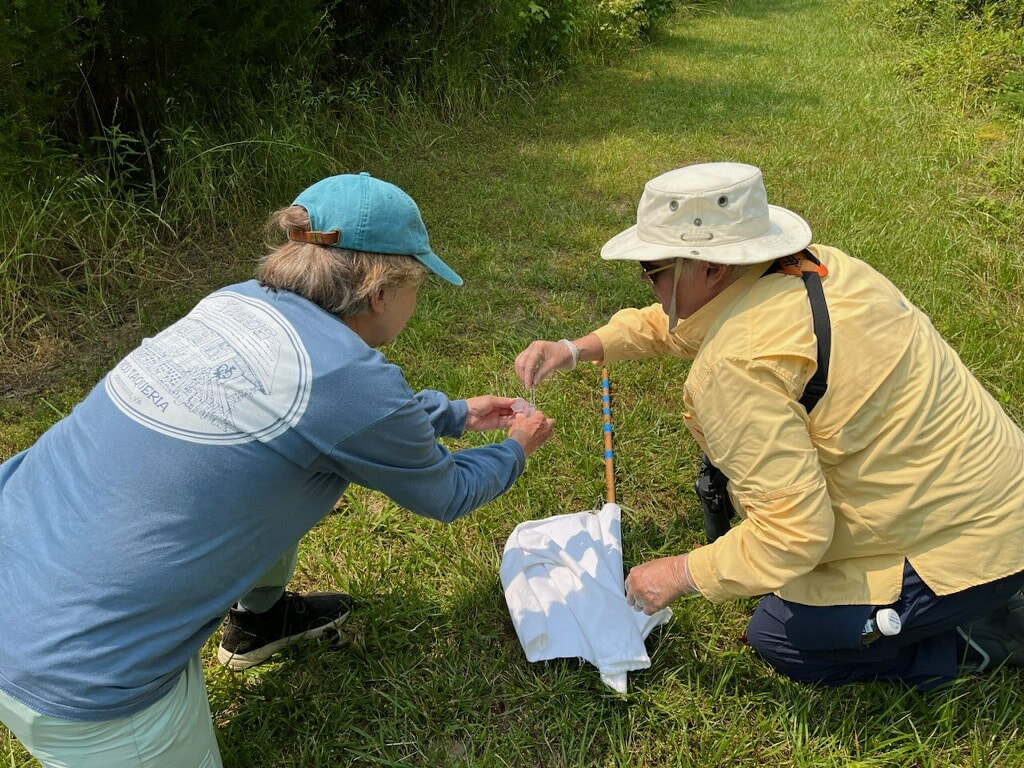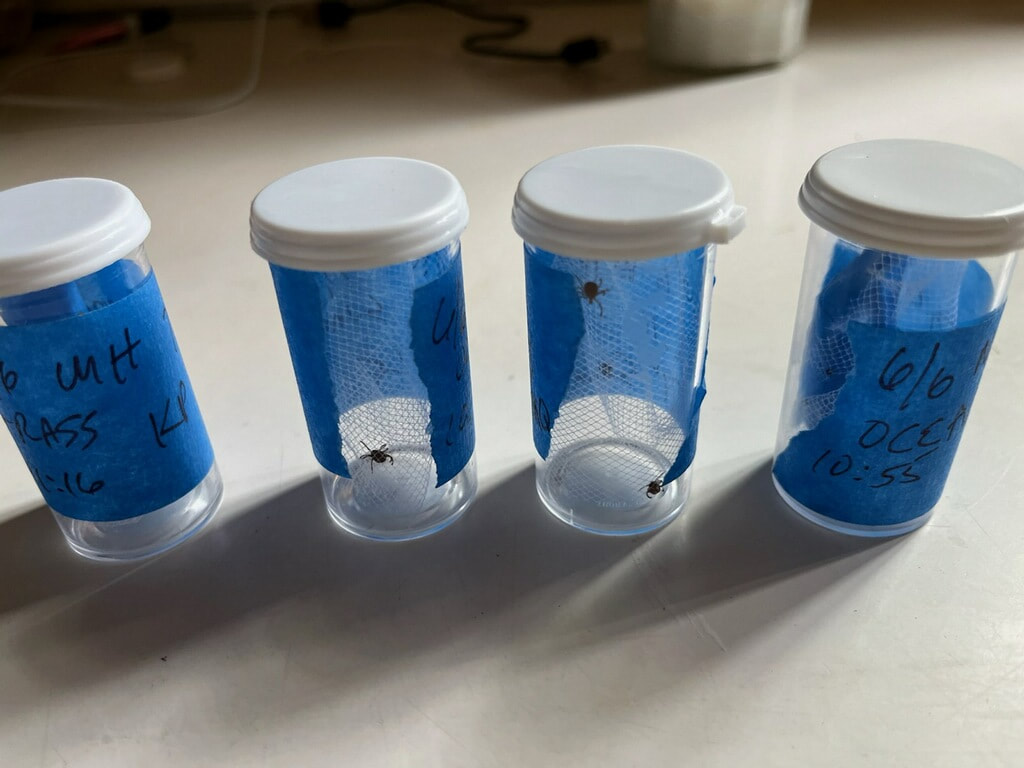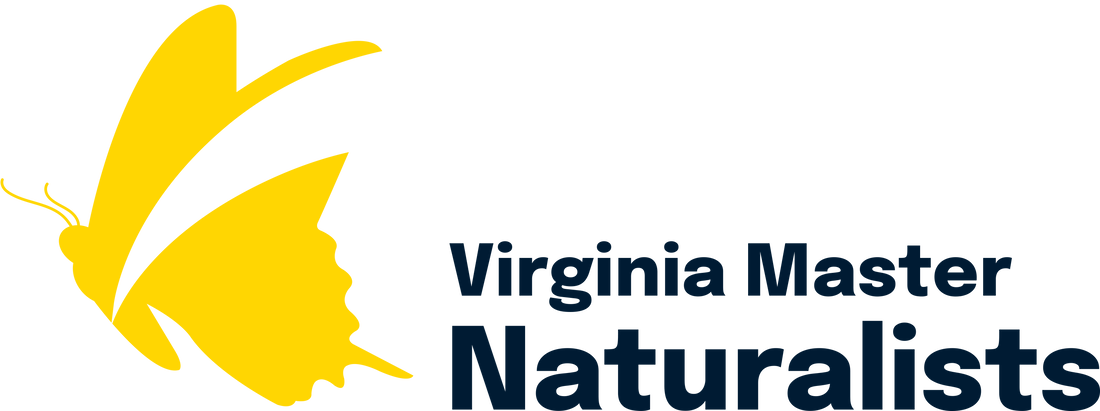--By Bob Eidam, VMN volunteer, Eastern Shore Chapter
Tick-borne diseases are on the rise throughout the world. One of the major challenges to understanding the reasons for increases in incidence and shifting ranges of tick species is a lack of surveillance data. Dr. Holly Gaff from Old Dominion University’s Tick Research Team (TRT) has been leading long-term surveillance in the eastern part of Virginia since 2009. Dr. Gaff and her lab use mathematical modeling and computer simulation to study infectious diseases, with a focus on ticks and tick-borne diseases. During the last 14 years, there have been many changes. For example, two species, Ixodes and Amblyomma maculatum, have moved in from the south. Increasing knowledge of the presence and phenology of these new species and previously established species adds important knowledge on how ticks may affect humans and pets.
On the Eastern Shore, the TRT collects ticks monthly from Kiptopeke State Park on the Southern part of the Shore. Every summer additional collections are made at various locations, including the Barrier Islands. Logistics prevent more regular collections from those additional sites throughout the year. As part of an ongoing effort to map and track these range expansions, the TRT is constantly in search of additional sources of tick data.
This is how the Eastern Shore Chapter of the Virginia Master Naturalists became involved. Kellie Piekarsky, lead volunteer, proposed the collaborative project to conduct tick surveillance on the Eastern Shore after being inspired by a presentation given by Dr. Gaff during a chapter meeting. Under Kellie’s leadership, the Chapter received approval to begin additional monthly surveillance at the Mutton Hunk Fen State Natural Area near Accomack. In addition to providing the TRT with additional data, collecting from Mutton Hunk Fen is significant because, historically, it is not reasonably accessible from Norfolk due to its location on the Northern part of Virginia’s Eastern Shore.
After training, chapter volunteers conduct active tick surveillance by flagging for ticks. This consists of dragging white flags in specified areas and then collecting any ticks that attach to the flag. Chapter members also conduct passive surveillance by collecting ticks found on themselves and pets. The ticks are stored in vials labeled with key data and placed in a volunteer’s freezer until transported and delivered to the ODU campus in Norfolk. They are transported to Norfolk in a cooler to keep them frozen by a volunteer or the chapter’s advisor, Shannon Alexander, where Dr. Gaff, or a member of the team, is given the samples. The Virginia Master Naturalist program will be added to all acknowledgments in the annual reports, scientific publications and presentations. The VMN will also be highlighted on the ODU Tick Team social media pages.
Kellie sums up the value of this partnership: “a partnership between ODU and ESMN is a great opportunity for our volunteers to contribute to this globally impactful research and serve as a force multiplier to ODU’s staff. Our volunteers are in the field dragging flags monthly, weather permitting.”
Tick-borne diseases are on the rise throughout the world. One of the major challenges to understanding the reasons for increases in incidence and shifting ranges of tick species is a lack of surveillance data. Dr. Holly Gaff from Old Dominion University’s Tick Research Team (TRT) has been leading long-term surveillance in the eastern part of Virginia since 2009. Dr. Gaff and her lab use mathematical modeling and computer simulation to study infectious diseases, with a focus on ticks and tick-borne diseases. During the last 14 years, there have been many changes. For example, two species, Ixodes and Amblyomma maculatum, have moved in from the south. Increasing knowledge of the presence and phenology of these new species and previously established species adds important knowledge on how ticks may affect humans and pets.
On the Eastern Shore, the TRT collects ticks monthly from Kiptopeke State Park on the Southern part of the Shore. Every summer additional collections are made at various locations, including the Barrier Islands. Logistics prevent more regular collections from those additional sites throughout the year. As part of an ongoing effort to map and track these range expansions, the TRT is constantly in search of additional sources of tick data.
This is how the Eastern Shore Chapter of the Virginia Master Naturalists became involved. Kellie Piekarsky, lead volunteer, proposed the collaborative project to conduct tick surveillance on the Eastern Shore after being inspired by a presentation given by Dr. Gaff during a chapter meeting. Under Kellie’s leadership, the Chapter received approval to begin additional monthly surveillance at the Mutton Hunk Fen State Natural Area near Accomack. In addition to providing the TRT with additional data, collecting from Mutton Hunk Fen is significant because, historically, it is not reasonably accessible from Norfolk due to its location on the Northern part of Virginia’s Eastern Shore.
After training, chapter volunteers conduct active tick surveillance by flagging for ticks. This consists of dragging white flags in specified areas and then collecting any ticks that attach to the flag. Chapter members also conduct passive surveillance by collecting ticks found on themselves and pets. The ticks are stored in vials labeled with key data and placed in a volunteer’s freezer until transported and delivered to the ODU campus in Norfolk. They are transported to Norfolk in a cooler to keep them frozen by a volunteer or the chapter’s advisor, Shannon Alexander, where Dr. Gaff, or a member of the team, is given the samples. The Virginia Master Naturalist program will be added to all acknowledgments in the annual reports, scientific publications and presentations. The VMN will also be highlighted on the ODU Tick Team social media pages.
Kellie sums up the value of this partnership: “a partnership between ODU and ESMN is a great opportunity for our volunteers to contribute to this globally impactful research and serve as a force multiplier to ODU’s staff. Our volunteers are in the field dragging flags monthly, weather permitting.”




 RSS Feed
RSS Feed